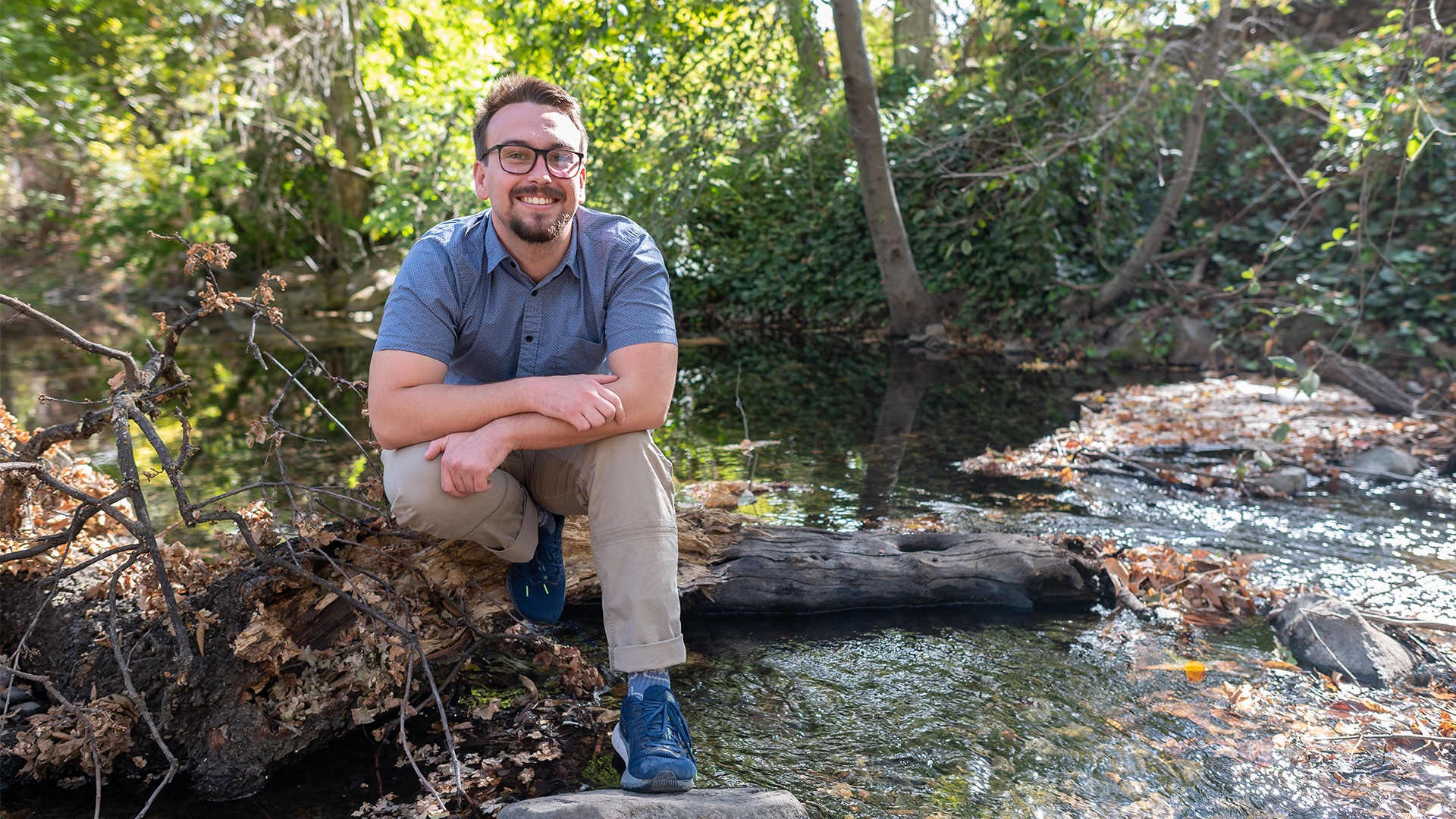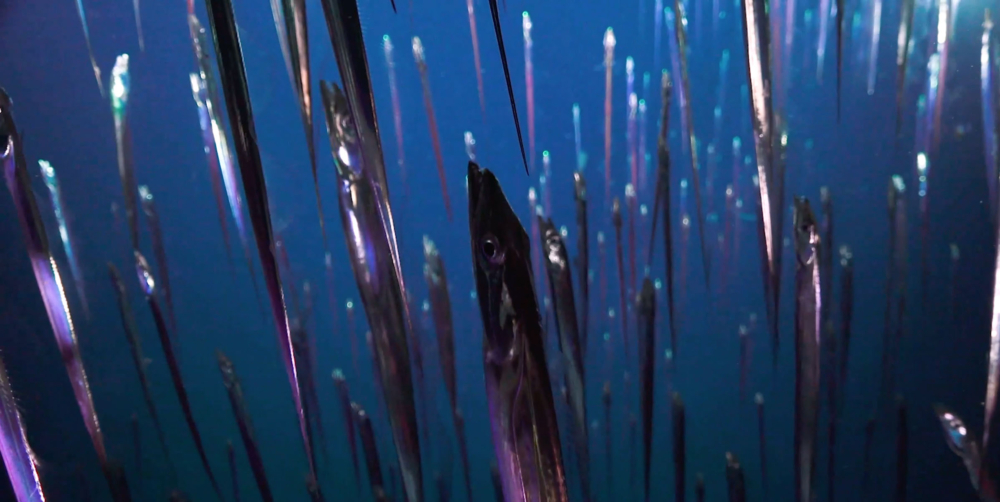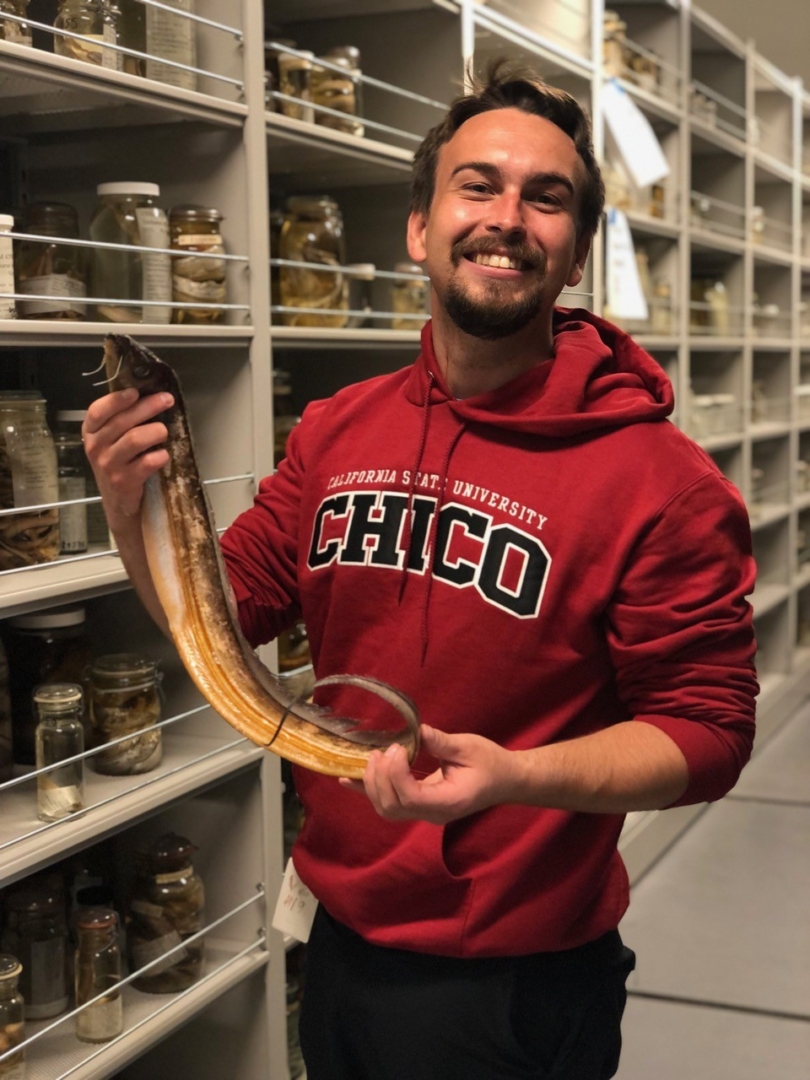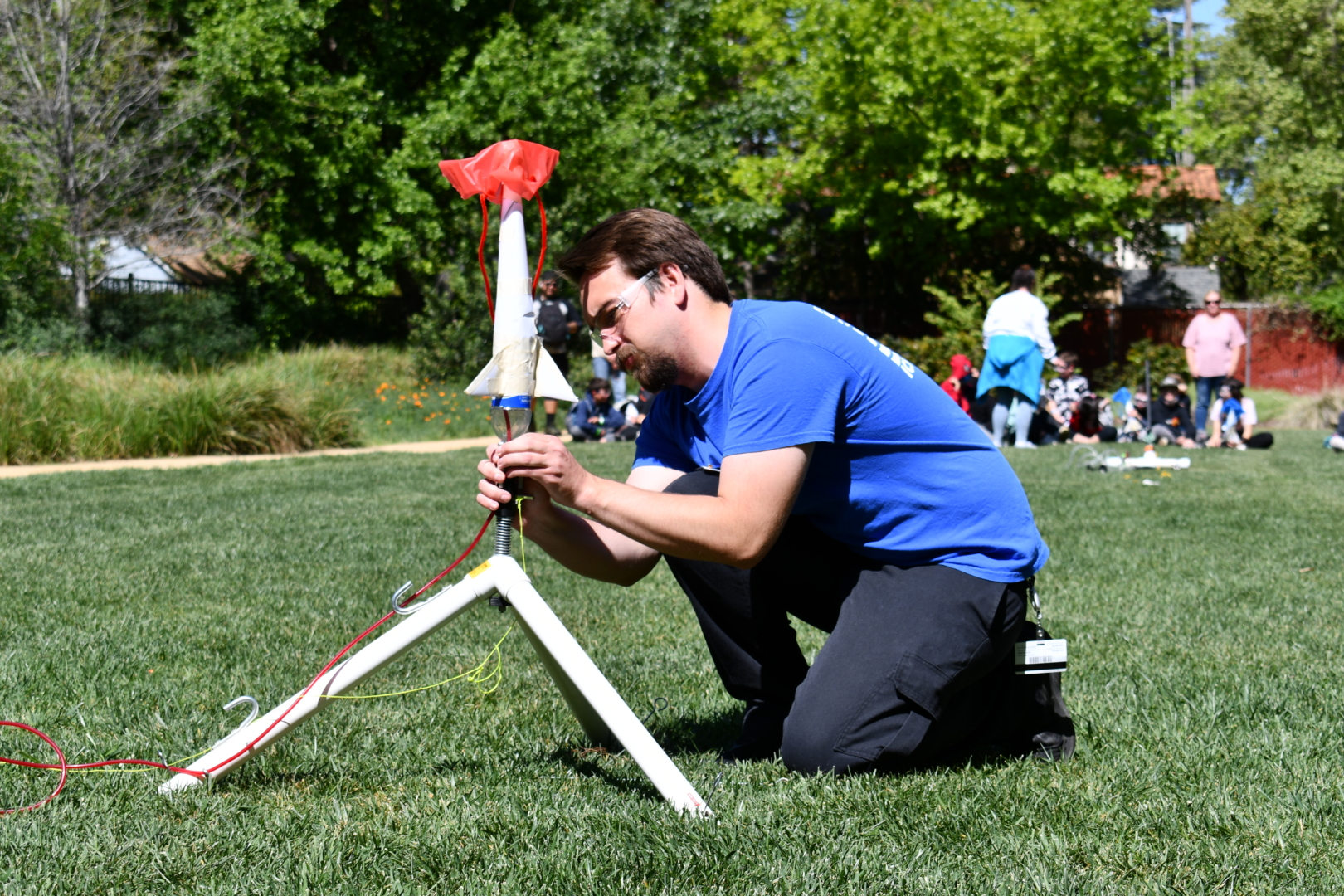Biology Student Among First to Research Fish’s Unusual Schooling Pattern

University Photographer
Cole Schmitt has counted a lot of fish swimming in an unusual way.
Which is a lot more complicated and productive than it sounds.
Now a senior double majoring in biological sciences and science education, Schmitt has been working with the National Systemics Laboratory and the Smithsonian Museum of Natural History for over a year, studying the unique vertical schooling behavior of cutlassfish (trichiurus lepturus). In more simple terms, the nocturnal, predatory fish routinely swim straight up toward the surface and not parallel to it.

“This is almost undescribed behavior in fishes as a whole,” Schmitt said. “Very little is known about vertical orientation in fish—I am doing some of the first scientific descriptions of this behavior.”
In 2020, as a sophomore, he was selected for a National Oceanographic and Atmospheric Administration (NOAA) Hollings Scholarship, a highly prestigious, three-year program that led to him interning under Katherine Bemis, curator of fishes at the Smithsonian.
“Right away from his emails and Zoom interview, it was clear that Cole would be an incredibly engaged researcher,” said Bemis. “Murilo Pastana, Cole’s co-mentor, and I immediately agreed to have Cole work with us at the NOAA National Systematics Lab based at the National Museum of Natural History.”
While this critical internship took place during a peak of many waves during the pandemic, it did not deter Schmitt from seizing the moment and making the most of the opportunity.
“I ended up doing everything virtually and the experience really taught me that virtual science is an accessible science,” Schmitt reflects. “My mom let me clear out the garage and turn that into my office—I’d back the car out of there every day, pull up my chair, and go to work.”
The stunning footage Schmitt analyzed for this project was captured by one of the Schmidt Ocean Institute’s remotely operated vehicles (ROV), 400 meters below the surface, 60 miles from Costa Rica.
Quantifying the school’s size and movement involved a lengthy exercise in patience and Adobe Illustrator—literally marking and counting the number of fish pointing in the same direction, meticulously tabulating group numbers, and isolating outliers.
By the time the internship program ended, he had developed a great working relationship with Bemis. So good, that he has continued working with her and the Smithsonian—and has been well supported by the College of Natural Sciences, both in terms of course credit for his research and financial support needed to attend and present at conferences.

“I’m really grateful to her. She has been an amazing mentor,” Schmitt said.
Their work has allowed him to dive headlong into data collection and analysis, and to present his findings at national conferences like the Joint Meeting of Ichthyologists and Herpetologists in Spokane, Washington, and the Society of Integrative and Comparative Biologists in Phoenix, Arizona, among others.
“Over the last two years, I have watched Cole go from being completely unfamiliar with cutlassfish to asking insightful questions that demonstrate his knowledge about the species and how their behaviors set them apart from other fishes,” said Bemis. “It has been so much fun to watch Cole dive into his research and make it his own.”
In the future, Schmitt hopes to compare other vertically orienting species to the cutlassfish and develop a phylogeny, “which studies and shows the lineage of this behavior over time and through evolution,” he explained. Given his background, it’s not surprising that Schmitt has gravitated toward ecological biology. He grew up in Costa Mesa, where you can smell the ocean from the schoolyard; the natural world has imprinted on him in a way that now serves as a compass for his research and goals.

“The ocean is really important to me. I’ve gotten to love and appreciate it in so many ways throughout my life, which I realize has been a monumental privilege,” Schmitt said. “So, I want to work hard to protect it for everyone. It’s scary how fish populations have declined by 90% across the board since the 1960s. This should be a much bigger deal than it is to everyone.”
Now at the tail end of his time with NOAA and Chico State, as he prepares to graduate in spring 2023, Schmitt is readying to advance his research and career by looking for ways to give back first. He is looking into programs that will allow him to continue researching while providing opportunities to teach and connect with schools and communities.
Schmitt’s service-minded approach to life and work is not new to him. Between research and class, he works at the Gateway Science Museum, where he can exercise his passion for science education. “I fundamentally believe that teaching—or just sharing knowledge—is a part of happiness in life. I want to experience that a bit more before I go to grad school.”

That kind of perspective is important. There’s no easy way of processing the environmental and climate emergencies reshaping our world or settling into the uncertainty it creates for future generations. His gratitude, optimism, and perspective, he said, all have been shaped by his experiences at Chico State.
“Faculty at Chico State have been behind me every step of the way, from helping me draft my application to getting credit for my research, and funding my travel to conferences. I’m so grateful to so many people,” said Schmitt. “Chico State is a school of opportunity. If you ask questions and dive in, there’s a good chance that something happens.”


